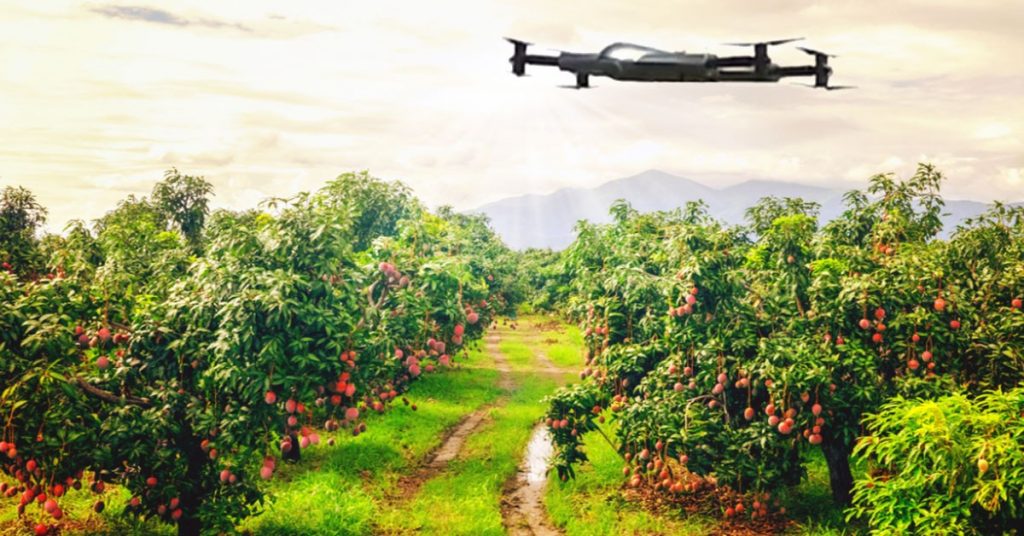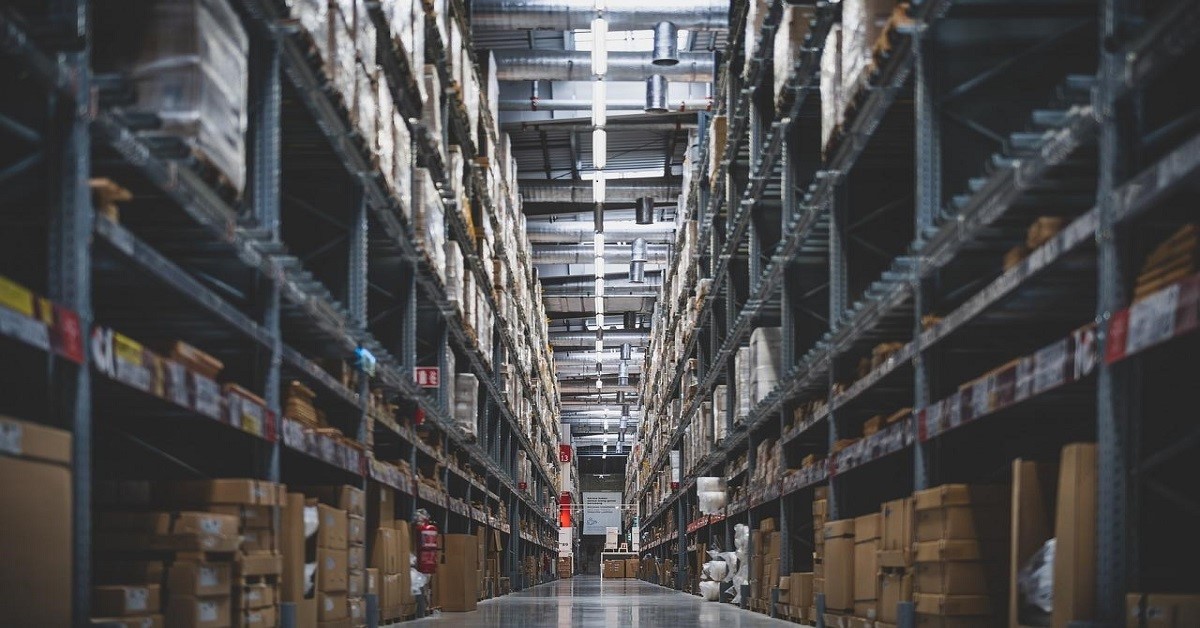Top Uses and Benefits in Fruit Farming and Production

Agricultural drones are helping farmers grow more food to meet the requirements of a growing population. Increasing number of people in the world and farmers must be looking for new ways to increase their harvests while keeping their land healthy. In 2025 drones brought exciting changes to farming. These drones have special sensors that collect useful information about fields, land, and crops. This makes it easier for farmers to check their plants and solve problems.
For citrus orchards, drones are especially helpful. They can count fruits and flowers on the trees, giving farmers a better idea of how much fruit they will harvest. This helps farmers plan their work more easily and make their farms more successful. Drones are becoming an important tool to make farming smarter and easier.
What is fruit production?
Fruit production involves growing fruits for people to eat and enjoy. Farmers aim to achieve three main goals in fruit farming:
- Controlling production windows: This means timing the growth and harvest of fruits to meet demand and ensure availability.
- Lowering production costs: Farmers work to Decrease expenses while maintaining healthy and productive crops.
- Enhancing fruit quality: The focus is on growing fruits that are nutritious, tasty, and attractive to consumers.
Fruit farming is practiced worldwide and is necessary for providing fresh, healthy food that supports human health and well-being.
Why Are Fruits Important for the Environment?
Fruits have an essential role in maintaining ecological balance. They aid in seed dispersal, allowing plants to grow in new areas and ensuring species survival. In agriculture, fruit production thrives when seeds are dispersed effectively.
Fruit trees provide many environmental benefits, including:
- Reducing energy costs: by offering shade and cooling
- Creating green jobs: in farming and production
- Improving air quality: and lowering CO2 emissions
- Managing storm water: by reducing runoff
Growing fruits has also significantly contributed to the progress of societies and nations, supporting both environmental and economic well-being.
What is the importance of fruit plantations?
Fruits and crops hold great commercial value and are economically important worldwide. They are not only essential to human diets but also contribute to society’s overall well-being. Beyond nutrition, fruit plantations play a key role in preserving soil health and supporting ecosystems.
The primary purpose of fruits is to disperse seeds and ensure plant reproduction. All flowering plants produce fruits, whether edible, sweet, or otherwise. Among these, apples are one of the most popular fruits globally. Known for their versatility, apples are widely grown and used in various products. Companies like the National Fruit Product Company focus on producing high-quality apple-based goods, showcasing the significance of homegrown fruit production
How can we increase fruit production?
There are several techniques to enhance fruit growth and production. For example, fruits like apples can be pretreated and dried to extend their shelf life. This method simplifies storage while maintaining their nutritional value.
Here are some effective strategies to boost fruit yield:
- Preventive measures on infestations on fruit crops
- Avoid aggressively trimming fruit trees. Reduced resilience to bacteria and other pests may result from this.
- Fertilize frequently and thoroughly.
These practices help farmers grow more fruits while preserving their quality and nutritional benefits
Top 10 Benefits of Drone Use in Fruit Production
drones transform agriculture by enabling farmers to address challenges quickly and efficiently. For apple farmers, planting drones makes it possible to grow more crops while using less fertilizer, water, and land compared to the latest methods. Drones equipped with aerial imaging and video capabilities help farmers plan seeding and resolve issues promptly.
Here are 10 benefits of using drones in fruit agriculture:
- Data Gathering and Precision: Drones collect accurate data to improve decision-making.
- Quality Imaging: High-resolution images help detect crop health and growth issues.
- Efficient Crop Inspections: Drones quickly survey large areas, saving time and effort.
- Cost-Efficient Deployment: Drones reduce labor and operational costs.
- Boost Crop Yield: Improved monitoring and precision lead to better harvests.
- Safer Pesticide Spraying: Drones ensure safer and even application of pesticides.
- Better Irrigation Information: Drones identify areas needing water, preventing over- or under-watering.
- Real-Time Monitoring: Farmers get instant updates on field conditions.
- Improved Seed and Crop Distribution: Drones ensure uniform planting and harvesting.
- Wider Fertilizer Distribution: Fertilizers are spread evenly, reducing waste and enhancing growth.
Drones are becoming a necessary tool for fruit farming, helping farmers achieve higher productivity and sustainable practices.
What are the uses of fruit crops?
Fruit cultivation has been a compulsory part of human society for centuries, contributing to health and economic growth. Continuous innovations help to improve harvests while decreasing labor requirements and improving agricultural practices.
One notable advancement is the development of apple-picking drones, an agricultural drone designed for autonomous harvesting. These drones can help address labor shortages by performing tasks traditionally done by workers. Although not yet widely used, apple picking drones have undergone test runs in apple and citrus orchards across Italy, Spain, and the United States, showing potential for broader adoption in the future. Fruit crops are valuable not only for their economic benefits but also for their role in improving human health. These innovations represent a step forward in making agriculture more efficient and sustainable.
Food Production and Nutritional Importance
- Fruit crops are excellent sources of mineral salts and vitamins.
- Fruits provide juices for nutritional consumption.
- Some fruits make wines and spirits.
- Some fruit crops get manufactured into medications.
Source of Agricultural Industries Raw Materials
Fruit production serves as the foundation for many agriculture-based industries. It supplies raw materials for various sectors, including transportation, packaging, and manufacturing. Products such as canned fruits, coconut-based goods, and even ingredients for pharmaceuticals are all made possible by fruit crops. This highlights the critical role fruit farming plays in supporting industries and the economy
How can Drone Tree Planting impact the Citrus Industry?
Agriculture drones in citrus orchards can monitor tree growth and gather data for audits during the growing season and before harvest. These drones can fly at high altitudes while collecting precise data on fields, rows, or individual trees.
Citrus farms also benefit from a network of skilled drone operators. Drones help farmers monitor:
- Irrigation
- Plant hydration
- Farming equipment
- Fertilizer use
- Environmental and soil data
This technology allows farmers to quickly and accurately assess orchard management, harvest yields, and overall tree health.
How Drone Innovations Are Transforming Agriculture Management
Drones are becoming essential in fruit tree production, helping farmers count trees and assess their health efficiently. Advanced camera sensors capture detailed images, allowing farmers to monitor the condition of their orchards effectively.
UAV imaging identifies and counts citrus trees while highlighting empty spots needing replanting or removing trees. Drone technology is vital in managing fruit tree production, saving time and resources. Programs like the Citrus Health Network further help growers by reducing labor and improving productivity. For citrus orchards, drones with infrared multispectral sensors map terrain, depth, and surface models. These features assist in evaluating orchard health and identifying slow-growing areas, making them an invaluable tool in modern fruit tree production.
Contact Us
Thank you for your message. It has been sent.
Latest Posts
Social Profiles















